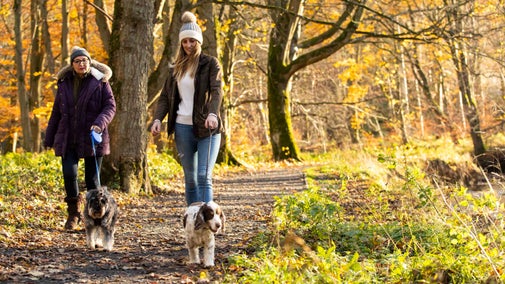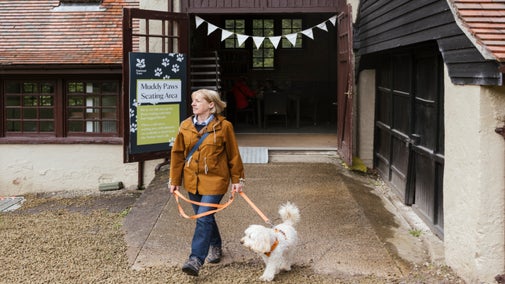
Discover more at Ludshott Common
Find out how to get to Ludshott Common, where to park, the things to see and do and more.

Responsible owners and their dogs are welcome at Ludshott Common. Here’s some information to help you plan a visit here with your four-legged friend and ensure everyone has an enjoyable day.
Ludshott Common is a popular site for dog walking, as well as for walkers and horse riders. It’s also a nature reserve, recognised as internationally important for its wildlife, and is grazed by cattle at certain times of the year to help preserve the heathland.
Please help us to protect this special site by following these pointers:

Ludshott Common is recognised as internationally important for its wildlife, with SSSI (Site of Special Scientific Interest) and SPA (Special Protection Area) levels of designation.
The common is managed and legally protected as an open space because it provides much needed habitats for a range of rare bird species that depend on heathland landscapes.
It's important to keep your dog under close control year-round to avoid disturbing these birds and other wildlife – and between 1 March until 31 July, it’s a legal requirement to keep dogs on a short lead to protect ground-nesting birds.
Ludshott Common is also home to our native UK snake species, the smooth snake, grass snake and adder. Keeping your dog on the footpaths and away from the heathland will help ensure they don't get bitten.
Our definition of close or effective control is:

Between 1 March and 31 July, it’s the law to keep your dog on a lead no more than two metres long on open access land like Ludshott Common, even if there are no livestock on the land.
This is designed to protect ground-nesting birds like the Dartford warbler, nightjar and woodlark during breeding season.
Breaking this law could result in a fine of up to £1,000.
Due to the huge increase in dog walkers using Ludshott Common since 2020, we have struggled to keep up with the disposal of dog waste left in our bins.
Emptying the bins incurred heavy costs, and was still not keeping up with demand.
As a charity, we have limited funds for waste disposal so as a result the dog waste bins on Ludshott Common were removed at the end of September 2021.
Dog waste alters the chemical structure of the soil, turning it into nutrient-rich grassland and making it unsuitable for heathland plants.
Dog waste can also contain Neospora caninum, an incurable disease that can cause cattle abortion and brain damage. Because it is passed on through the mother, it can significantly reduce the size of a herd.
Please help us to protect this special habitat by taking your dog waste away with you.
Thank you for taking the time to read this article, we hope you enjoy your visit.

Find out how to get to Ludshott Common, where to park, the things to see and do and more.

We've partnered with natural pet food maker Forthglade so that you and your dog can get even more out of the special places we care for.
Discover the best places for you and your dog to explore, from coastal adventures and dramatic mountains to more leisurely walks and gardens to visit nearby. Plus, find information on dog-friendly cafés and read our Canine Code.

If you’re bringing your dog(s) to the places we care for, you'll find information on our Canine Code and pawprint rating system, created in partnership with Forthglade, to help plan your visit.

Rest and refuel after getting out in nature with your dog. Here's a selection of the best walks with dog-friendly cafés at places we look after.

We've partnered with natural pet food maker Forthglade to create the Dogs Welcome project, helping you and your dog(s) get the most out of the places in our care.

The heathland at Ludshott Common dates back 5,000 years and contains some of the few remaining areas of lowland heath in Europe. Discover some of the birdlife and wildlife you can see here, as well as similar heathlands and woodlands you can visit nearby.

Bring your dog to Hampshire, for a fun day out: explore formal gardens, expansive estates and parkland, or simply wander across commons and among the woodland and heath of the New Forest.
